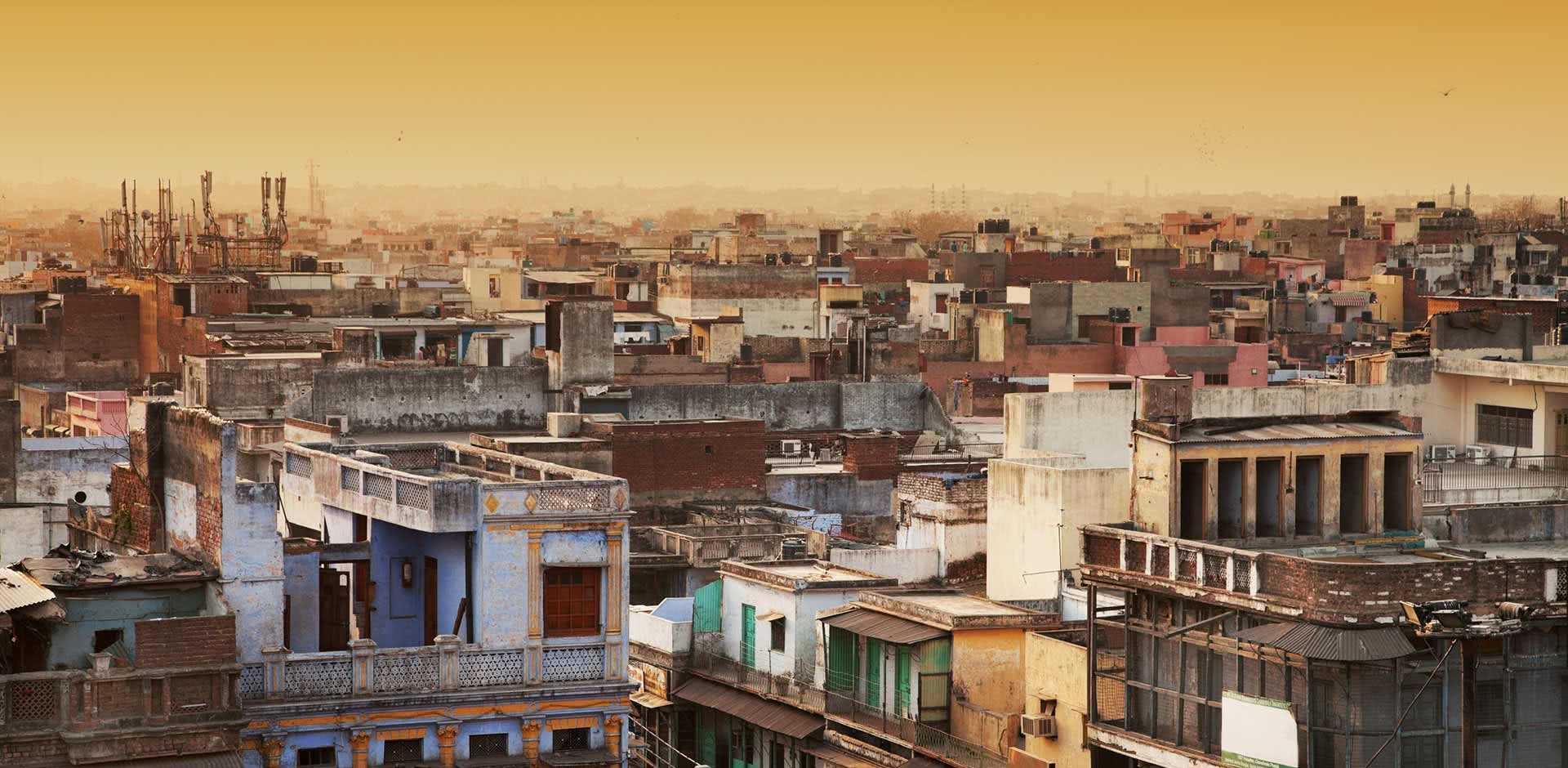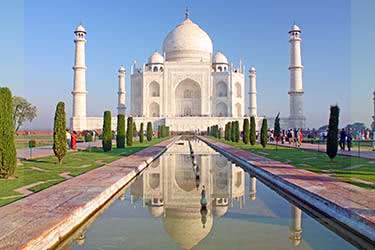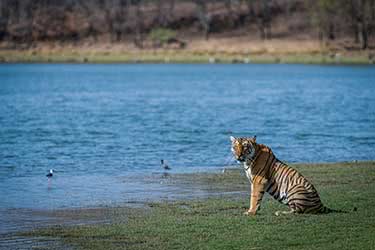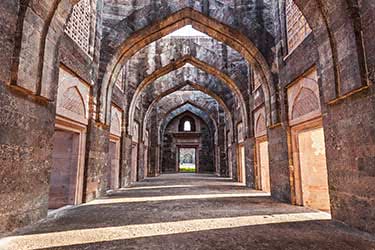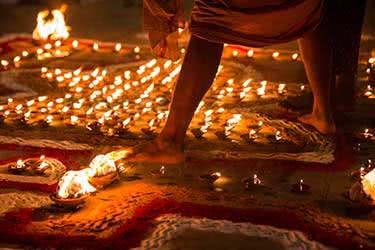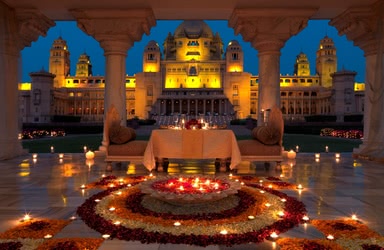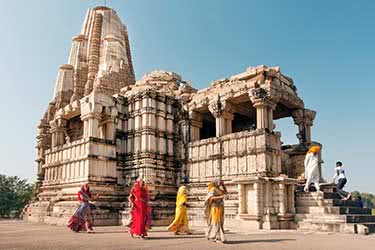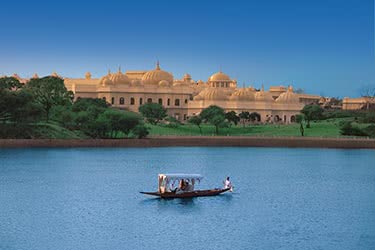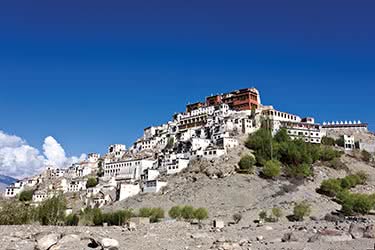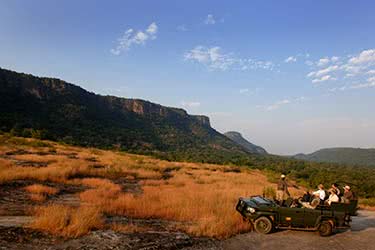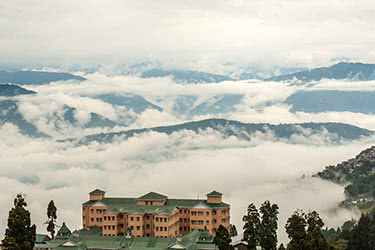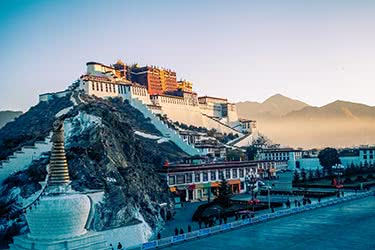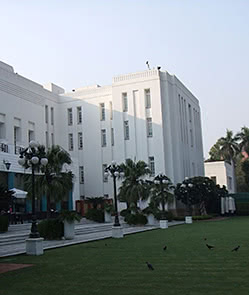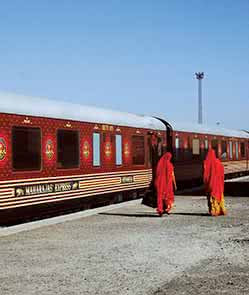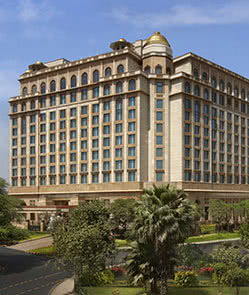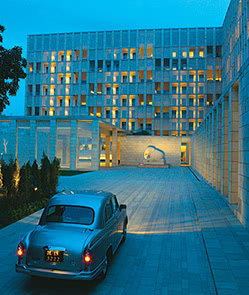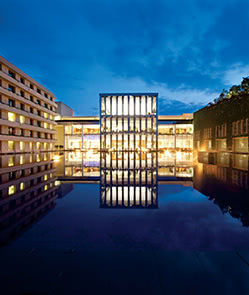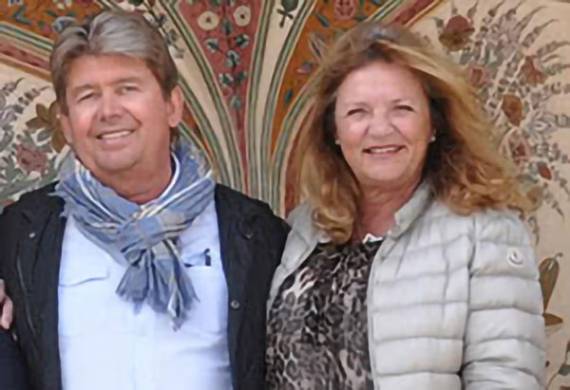
New Delhi
Visitors should note that the months of April through June are exceedingly hot and humid and July through September brings monsoon rains; as such, the best time to visit is during October to March, when the air is generally dry and temperatures moderate.
Experiences
A handpicked selection of experiences endorsed by our experts. If you can’t see what you’re looking for, let us know, as our extensive network of local contacts can open many doors.
Baha'i Lotus Temple
Visit the Baha’i Lotus Temple, an interfaith worship hall that is considered an architectural wonder of the modern world. Inspired by the form of a lotus blossom, the temple was designed with 27 free-standing marble-clad “petals” arranged in groups of three to form nine sides. Nine doors open onto a central hall, which holds up to 2,500 people.
Chandni Chowk
Explore the bustling Chandni Chowk market, one of Delhi’s oldest and busiest, located next to the famed Jama Masjid, or Friday mosque. Here, stalls sell every kind of Indian delicacy imaginable, and spice shops closely guard secret recipes (for example, a custom-ground masala) passed down over generations.
Contemporary Art
Go on an insider’s contemporary art tour, meeting the driving forces of such leading Delhi galleries as Vadehra Art Gallery, Gallery Espace, Anant Art Gallery and Delhi Art Gallery. Remote Lands can also arrange visits to the studios of local contemporary Indian artists.
Gurdwara Bangla Sahib
Visit the Gurudwara Bangla Sahib temple, an important Sikh shrine located near Connaught Place in the heart of Delhi. Dedicated to the eighth Sikh guru, Guru Harkrisha, the temple is open to people of all faiths, who can worship, hear kirtan (religious hymns) and partake of langar (community kitchen meals). You must cover your head and remove your shoes before entering the temple.
Houses of Worship
Delhi is one of the most religiously diverse cities in Asia. Spend an afternoon or a full day with a professor of Eastern religions, who will take you to various houses of worship and discuss comparative beliefs of Hindus, Jains, Parsis, Sikhs, Muslims, Buddhists, and more who all call Delhi their home.
Humayun's Tomb
Any visit to Delhi must include Humayun’s Tomb, the final resting place of the second Mughal emperor. Not only is it the earliest example of the Mughal garden-tomb style, but it's also a direct architectural predecessor of the more famous Taj Mahal. Built in the late 1500s, today the tomb has undergone extensive renovations under the auspices of UNESCO and is one of the best preserved ancient sites in New Delhi.
Jama Masjid
In the heart of Old Delhi near the Red Fort lies Masjid-i-Jahan Numa, colloquially called the Jama Masjid, or “Friday Mosque.” Built by Shah Jahan (who also built the Taj Mahal) in 1656, it’s one of the oldest and largest mosques in India, complete with four towers, two minarets and ample white marble and red sandstone.
Qutb Minar Mosque
See the imposing Qutb Minar, or victory tower, the world’s tallest freestanding minaret, which stands at a height of 237 feet (72 meters). The minaret stands within the Qutb Complex, a UNESCO World Heritage Site, which also includes the ruins of mosques, gates and tombs built by Delhi’s first dynasty of Muslim rulers.
Red Fort
Visit the imposing Red Fort (one of Delhi's numerous UNESCO World Heritage sites). Like Jama Masjid, it was built by the Mughal emperor Shah Jahan, and served as both his palace and seat of government. A vast structure of red sandstone, the Red Fort's planning and aesthetics represent one of the pinnacles of Mughal architecture. For architecture enthusiasts, Remote Lands can arrange a prominent published scholar to join as a specialist guide.
Textiles
For Indian textile aficionados, Remote Lands can arrange a visit to the home of a Kashmiri family dynasty renowned for their knowledge and inventory of the finest shawls, scarves, carpets and other indigenous textiles. The family's regular customers include members of government, financiers and other magnates who seek the best quality wedding shawls, saris and other garments worn on special occasions.
India Regions
Explore in-depth information, experiences and highlights by navigating to specific regions using the links below on the right.
Northern
Southern
North-Eastern
Rajasthan
Wildlife Parks
Western
Andaman & Nicobar Islands
Central
- Agra
- Alwar
- Andaman And Nicobar Islands
- Arunachal Pradesh
- Assam
- Bandhavgarh National Park
- Bangalore
- Bhopal
- Calcutta
- Chennai
- Cochin
- Coorg
- Darjeeling
- Goa
- Gulmarg
- Gwalior
- Hampi
- Hyderabad
- Jaipur
- Jaisalmer
- Jawai
- Jodhpur
- Kanha National Park
- Karaikudi
- Khajuraho
- Kovalam
- Leh
- Madurai
- Mahabalipuram
- Maheshwar
- Mumbai
- Mysore
- Nagaland
- Nagarhole & Bandipur
- New Delhi
- Orchha
- Panna National Park
- Pench National Park
- Pondicherry
- Ranthambhore
- Rishikesh
- Satpura National Park
- Shimla
- Sikkim
- Srinagar
- Udaipur
- Varanasi
Multi-Country Specialists
India Goes Well With




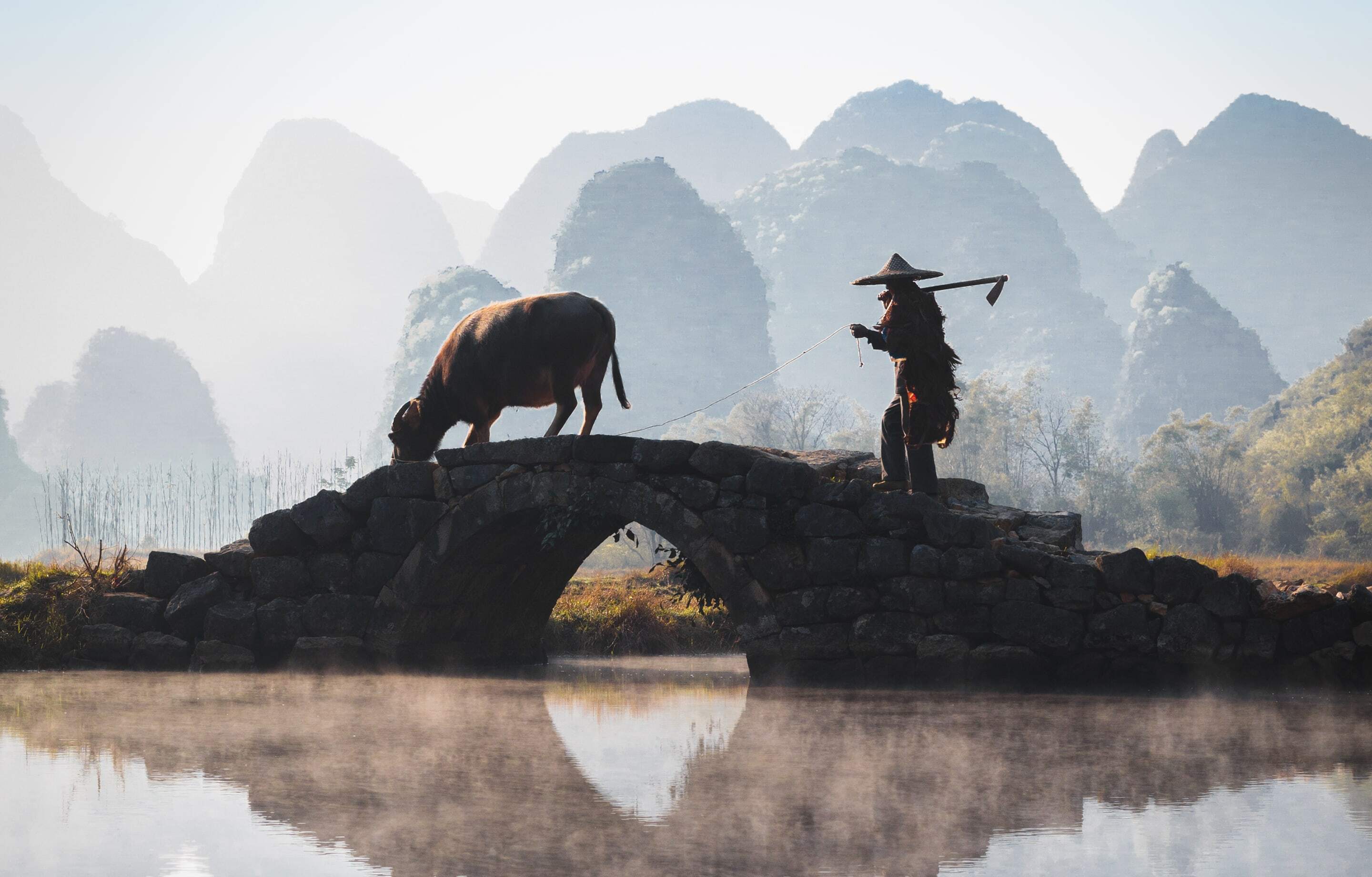
Exclusively Asia
With Remote Lands you'll travel with people who have made Asia the solitary focus of their own lifelong adventure. As our guest, you'll discover Asia on a journey that is completely, authentically your own, adapted from our own remarkable experiences and adventures over the years.
With Remote Lands you'll travel with people who have made Asia the solitary focus of their own lifelong adventure. As our guest, in the continent that our north American founders Catherine and Jay have adored and explored for decades, you'll discover Asia on a journey that is completely, authentically your own, adapted from our own remarkable experiences and adventures over the years.
Travelogues
An Asia-focused magazine brought to you by Remote Lands - a platform for adventure, luxury, and authenticity from experts and explorers around the continent.
A Guide to New Delhi’s Very Best Luxury Hotels
- Author
- Raghav Modi
A jumping off point for places like Madaya Pradesh and Rajasthan, New Delhi’s status as a travel hub for India has attracted some of the finest hotel accommodations in the country.
New Delhi’s 5 Finest Fine Dining Restaurants
- Author
- Raghav Modi
Food and travel writer Raghav Modi gives us the inside on the finest dining in India’s capital of New Delhi.
Remote Lands’ Dozen Dream Destinations: Where to Travel in Asia for 2020
- Author
- Travelogues
Jungles? Food? Beaches? Summer Games? Remote Lands knows exactly where you should travel in 2020 with the Dozen Dream Destinations.
What Others Say
Here is a small selection of the kind words our clients have said about us recently.
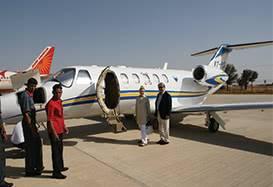
Couple from Madrid
Our private jet was a very important part of our trip. Most of the legs were less than 30 minutes, compared to six to 10 hours if we traveled by road. Overall, we had a fantastic trip to a new country for us. Remote Lands never fails!
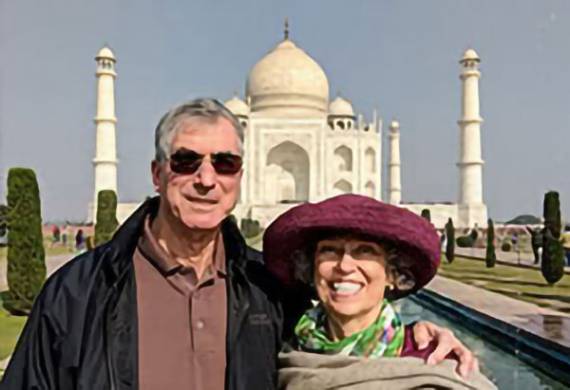
Couple from New York City
All of our guides were personable, knowledgeable, and well spoken.
